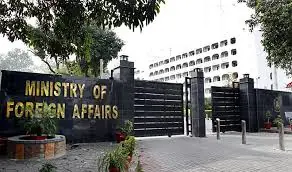Pakistan’s public debt soars to Rs67,525 billion
Pakistan’s public debt, both domestic and foreign, has soared to Rs67,525 billion in the last fiscal year, up Rs4,644 in the last fiscal year, as the country prepares to present its annual budget on Wednesday (tomorrow).
The reason for such an increase was the federal primary deficit (surplus) and interest on the debt, according to the Pakistan Economic Survey report that Finance Minister Muhammad Aurangzeb presented in Islamabad on Tuesday.
Pakistan’s public debt surged by Rs67.5 trillion as of the end of March compared to the previous year as the country looked for avenues to support its economy.
“The repayment is not going to be a big issue for next fiscal year,” the finance minister said in response to a query at the press conference. “I do see some of the commercial bank borrowing coming in.”

One of the graphs in the report showed that the total per cent of public debt to GDP stood at 75%.
Debt sustainability depends upon four key ingredients: primary balances, real growth, real interest rates, and debt levels, said the International Monetary Fund in a March 28 blog.
It highlighted that higher interest rates and debt levels make it more challenging for the government while higher primary balances—the excess of government revenues over expenditures excluding interest payments—and growth help to achieve debt sustainability.
“Public debt as a fraction of gross domestic product has increased significantly in recent decades, across advanced as well as emerging and middle-income economies. It is expected to reach 120 per cent and 80 per cent of output respectively by 2028,” it said.

Many experts have said that a significant part of the South Asian country’s budget goes into debt servicing, making it difficult to allocate funds for key sectors like education and health.
Interest expense was recorded at Rs5,517 billion during the first nine months of the current fiscal year against its annual budgeted estimate of Rs7,302 billion, said the report.
Interest expense on domestic debt was recorded at Rs4,807 billion, which is 55 per cent higher as compared to interest expense on domestic debt in same period of preceding year. “The main reasons for increase are due to high cost of borrowing on new domestic debt and resetting of existing floating rate debt at higher rates [around 74 per cent of domestic debt is floating rate] on back of higher policy rate.”
For the latest news, follow us on Twitter @Aaj_Urdu. We are also on Facebook, Instagram and YouTube.




















Comments are closed on this story.